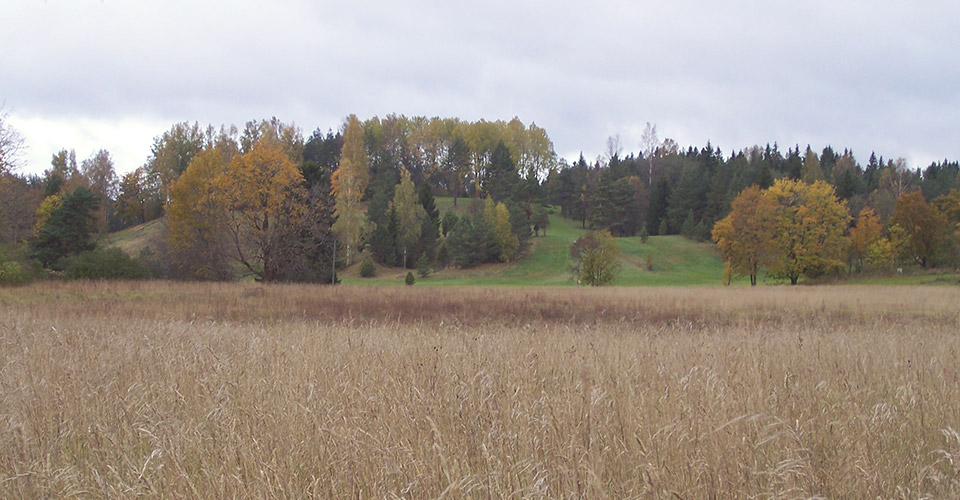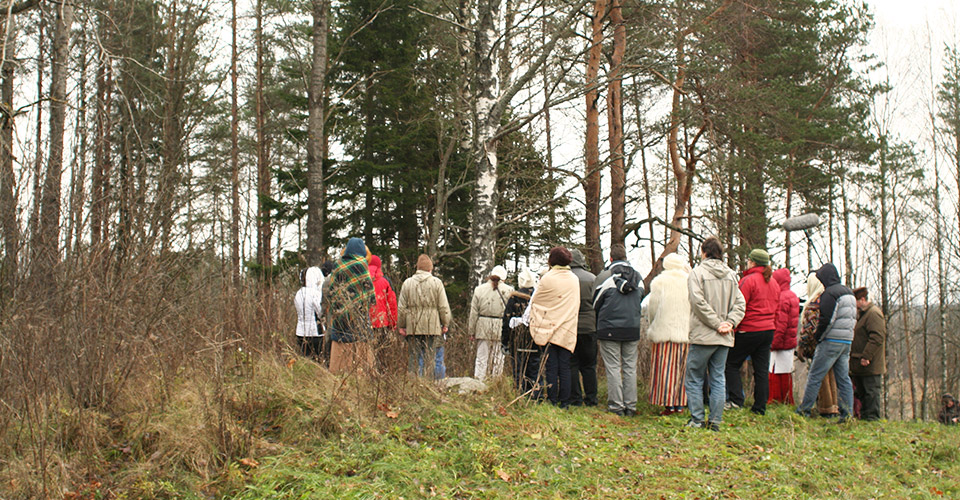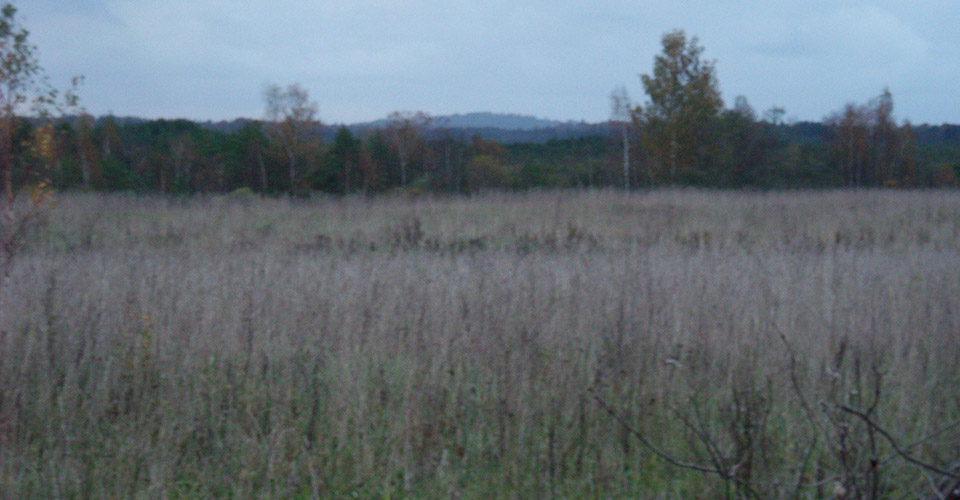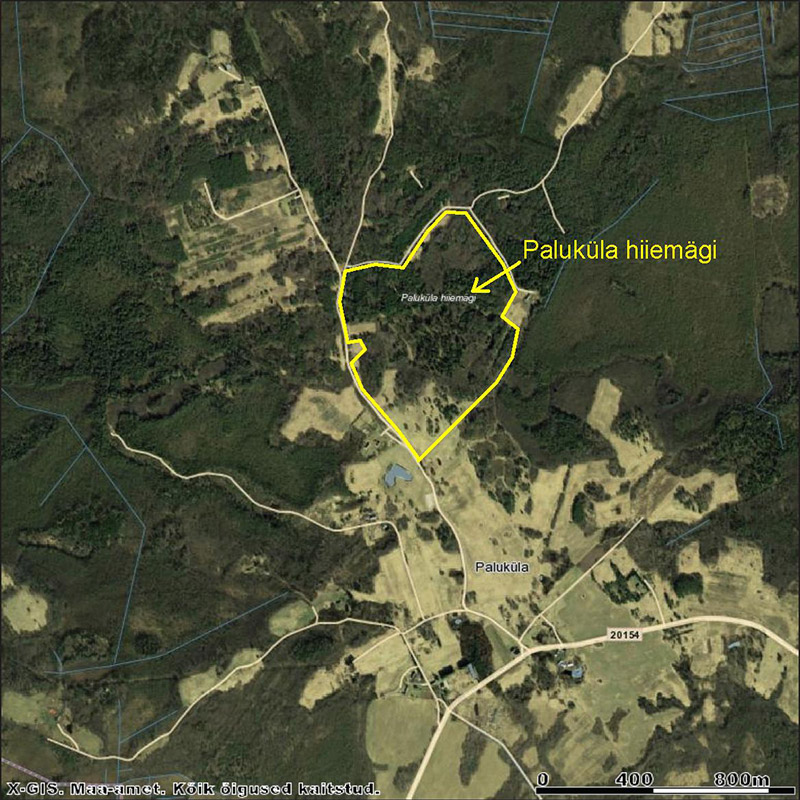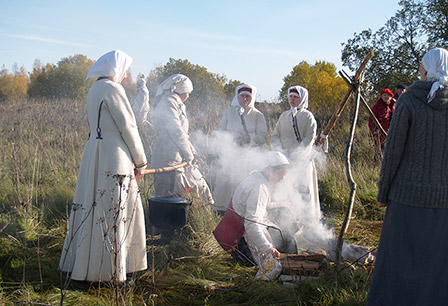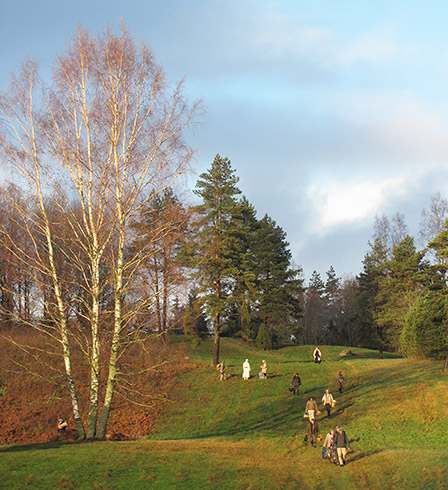موقع
Before the conquering and Christianisation of Estonia by Germans and Danes during the Livonian Crusade in the 13th century, all local villages shared sacred natural sites. Many local villages date from these times and their companioning sacred natural sites form a pattern in the landscape. في منطقة قرية Paluküla في وسط استونيا يضع فورست هيل دعا Hiiemägi المقدس ("Hiis-تلة "). Numerous local people still follow the Maausk, meaning they worship nature as a divinity. They offer the first harvest of the year to the ancestors who are associated with Hiiemägi and the trees. They also celebrate Midsummer Day at this site. According to tradition, its trees are not to be cut and the hill cannot be ploughed or otherwise disturbed.
البيئة والتنوع البيولوجي
The hill forms part of a watershed area. It comprises diverse smaller heaps and valleys and is the most prominent point of the Paluküla end moraine and the kame field. Most of the hill is covered with forest. Forest habitat types include Fennoscandian herb-rich forests with Picea abies and Western taiga. The Estonian environmental registry reports protected forest bird species including the white-backed woodpecker Dendrocopos leucotos, bat species and a population of red wood ants (Formica polyctena).
تهديدات
تقريبا جميع سكان القرية يقولون أن التل هو المهم بالنسبة لهم ولكنهم منقسمون بعض الناس عن طريق التأثيرات من خارج مثل تسويق استخدام الأراضي, البناء والتنمية والاتحاد الأوروبي تدخل ممكن. The administration of the Kehtna municipality is set to build a sports and recreation centre on one side of the hill. Immediate neighbours are disturbed by the proposed projects that would alter their everyday lives. According to the detailed spatial plan of the centre, two ski-lifts and water-pipes for artificial-snow cannon would require excavation. وبالإضافة إلى ذلك, twenty buildings, plus parking areas; a volleyball square, two tennis courts and a football stadium have been planned next to the site, all within the nature conservation area.
المؤتمنين
Followers of the Maausk regularly perform individual and communal rituals at the site. They have traditionally protected sacred natural sites by local bans of timber and agricultural practices. They continue to honour the sacred hill and some formed an جمعية لحماية فورست هيل Paluküla المقدس. تعمل الجمعية كأحد راعيي التل ويهدف إلى دراسة والحفاظ على موقع مقدس والتواصل مع المنظمات الأخرى. A supporting organisation for indigenous local nature religion, the ‘الاستونية بيت Taara وأديان الأصلية’ has been registered as a religious organisation. ‘The House’ protects and revitalises sacred natural sites all over Estonia.
رؤية
The custodian movement is working to protect and conserve sacred natural sites such as Hiiemägi from forest cutting and building plans. ينبغي حماية المواقع الطبيعية المقدسة في جميع أنحاء إستونيا والمؤسسات التي تتعامل مع إدارة التراث الطبيعي والثقافي تحتاج إلى أن تكون مجهزة لدعم جهود المحافظة من قبل القيمين.
هذه الأماكن خاصة, حيث لا تهيمن النشاط البشري على الطبيعة, توحد الطبيعة والتراث، وفي الوقت نفسه يكون البعد المقدس. في هذه الحالة من Paluküla, يمكن استخدام نصف مفتوحة التلال الجنوبية للانزلاق في فصل الشتاء في المستقبل المنظور, ولكن من دون الانشاءات الاصطناعية. موقع وعلاوة على ذلك يمكن أن تكون بمثابة نموذج حي للتعليم الطبيعة, إدخال ممارسات الحفظ الثقافية لجمهور واسع.
التحالف
Local custodians first made contact with the Estonian House of Taara and Native Religions. An analogical organisation in neighbouring Finland, Taivaannaula, has collected signatures in support of the hill; Finno-Ugric people have similar sacred natural sites and corresponding traditions. Estonian Fund for Nature gave legal advice and issued a statement in support. A non-governmental organisation, Estonian Greens, included the case in their book of interviews on nature protection in Estonia.
Native Americans, on their visit to Estonia, had a ceremony on the site in support of the sacred natural site. Some biologists, folklorists, and archaeologists support the case with their professional knowledge.
عمل
On November 8th 2004, within period known as “Foggy Souls’ Time”, a gathering of people on the hill was able to stop the bulldozer and attract public and media attention. Signatures from all over Estonia were collected for a petition. Local custodians initiated a court case against the detailed spatial plan about a winter sports centre and including sky-lifts. The construction permit was withdrawn, but the plan was not forgotten. The case now lies under authority of the European Court of Human Rights. Local custodians keep watching out for preliminary construction permits and still challenge them when necessary.
حفظ الأدوات
Translation of the ‘IUCN UNESCO Sacred Natural Sites: مبادئ توجيهية لمديري المناطق المحمية’ into Estonian in 2011 and subsequent introduction of the book in regional offices of the Environmental Board, has enabled to take sacred natural sites into account in planning processes. The new general plan of the Kehtna municipality mentions sacred natural sites and does not allow their harm with constructions.
السياسة والقانون
Hiiemägi محمي كمنطقة حماية الطبيعة Kõnnumaa في ناتورا 2000 شبكة. لا يعترف القانون الإستوني المواقع الطبيعية المقدسة, ولكن لا تعترف المواقع الأثرية والطبيعية والمحمية. Draft legislations have been written by a group within the برلمان, لتعديل كل من قانون حفظ التراث وقانون حماية الطبيعة استونيا. ينبغي أن ينظر إلى المواقع الطبيعية المقدسة كنوع خاص من النصب, مع القواعد المماثلة من الحماية.
النتائج
The hill remains intact; the forest is not cut down. Protected and other species still live in their habitats. Meetings of the people, following old native traditions and celebrating holidays of folk calendar take place again. Ritual fires take place at the traditional fire-place and all stakeholders increasingly take the sacredness of the hill into account. Custodians now have international contacts and the national conservation plan on sacred natural sites in Estonia 2008–2012 has been partly implemented. Fieldwork on inventory of the sites has begun.
Oral heritage, written down from Paluküla in 1937:
"Another case was that many alder-trees had been cut down from Hiiemägi. It meant bad because before the trees surrounding the offering stone were holy. And the prediction came true. This year many cattle died in the village."
- Estonian folklore archives ERA I 5, 723 (2)
- Eesti. 2008. Eesti ajaloolised looduslikud pühapaigad. Uurimine ja hoidmine, valdkonna arengukava 2008–2012. Tallinn. Conservation plan "Sacred Natural Sites in Estonia: دراسة والصيانة 2008 -- 2012"
- Ehin, K, Sepp, A. 2006. Paluküla Hiiemäe Hoiu Seltsing, في: Keskkond ja kodanikualgatus: intervjuud oma kodupaika hoidvate inimestega (Environment and citizen initiative: interviews) Eesti Roheline Liikumine, 2006 ص. 25-30.
- بري, R. and McLeod, C. (2008) ‘المواقع الطبيعية المقدسة. مبادئ توجيهية لمديري المناطق المحمية', Best Practice Protected Area Guidelines Series No16, غدة, سويسرا, IUCN.
- Jonuks, تي. 2012. Hiis-sites in the parishes of Rapla and Juuru. Estonian Journal of Archaeology, Supplement, المجلد. 1, ص. 168–183.
- Kaasik, A. 2011. Conserving sacred natural sites in Estonia, في: Mallarach, J-M; PAPAYANNIS, تي. & Vaisanen, R. (محرران.) Diversity of Sacred Lands in Europe. وقائع ورشة العمل الثانية لمبادرة ديلوس, 2010. IUCN & Metsahällitus. فنلندا.
- Kütt, A. The diversity of Estonian sacred natural sites in the context of contemporary governing. Abstract for the conference PROTECTING THE SACRED: Recognition of Sacred Sites of Indigenous Peoples for Sustaining Nature and Culture in Northern and Arctic Regions Rovaniemi and Pyhä, فنلندا, 11-13 سبتمبر 2013.
- Sepp, A. 2011. "ما هو موقع مقدس الطبيعية وماذا هو مهم بالنسبة لك?"
- Sepp, A. 2012. National Plan on Natural Sanctuaries in Estonia - 2008–2012: challenges and perspectives, في: Mallarach, J-M (و.) Spiritual Values of Protected Areas of Europe Workshop Proceedings – Isle of Vilm, 2nd–6th Nov 2011. BfN-Skripten 322 2012, ص. 149-155.
- Association to protect the Sacred Forest Hill in Paluküla: http://palukyla.maavald.ee/
- الاستونية بيت Taara وأديان الأصلية: http://www.maavald.ee/eng/
- NGO studying sacred natural sites in Finland: http://www.taivaannaula.org/in-english/ | http://www.taivaannaula.org/2012/11/palukylan-hiidenmaella/
- Chains of eskers, kame fields and small drumlins: http://www.estonica.org/en/Nature/Transitional_Estonia/Chains_of_eskers,_kame_fields_and_small_drumlins
- Worship of Indians and Native Estonians: HTTP://tiny.cc/tsxj9w
- The Parliament of Estonia. Deputies´Associations and Unions: Natural Sanctuaries Support Group | http://www.riigikogu.ee/index.php?id=34605

